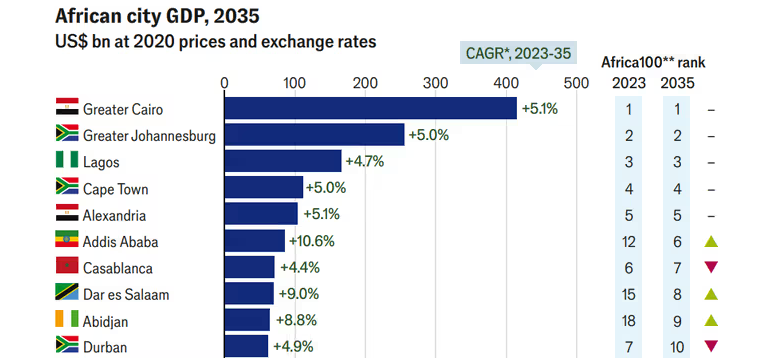A report by the Economist Intelligence Unit has revealed that by the mid-2030s, Africa’s top 10 city economies will be home to about 400 million people, around 21% of the continent’s population. These cities, ranging from sprawling megacities to smaller capitals like Libreville, Cotonou, and Port Louis, are projected to generate over 60% of Africa’s GDP.
The combined nominal GDP of these cities in 2023 was $1.4 trillion, with this figure set to more than triple to over $5 trillion by 2035. Regardless, these cities are projected to expand at a steady rate of 6% annually.
Major urban centres such as Cairo, Lagos, and Johannesburg will remain at the forefront of Africa’s top 100 city economies by 2035. The largest 20 city economies, which include both megacities and rapidly expanding middleweights, are forecasted to account for nearly 70% of Africa’s GDP (in 2020 prices and exchange rates) by that time.
These cities will become central hubs of commerce, trade, and industry, featuring vibrant consumer markets, advanced commercial networks, and robust industrial and import-export sectors.
However, this growth brings considerable challenges. Cities will need to tackle issues like overcrowding, informal housing, high unemployment, underdeveloped public services, strained utilities, and the escalating threat of climate change. Addressing these concerns will be vital to unlocking the full economic potential of Africa’s rapidly evolving urban landscape.
Here are the top 10 African cities with the highest GDP projection in 2035.


